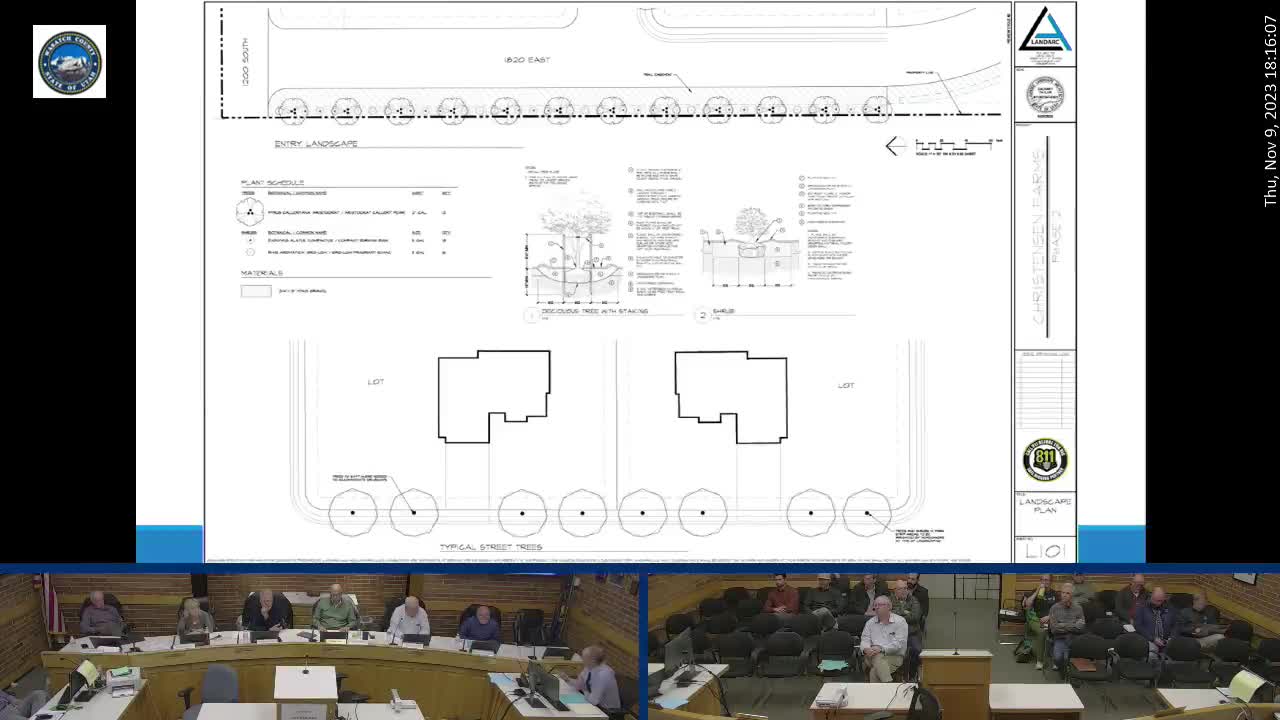Fencing Plan Sparks Controversy in New Development Proposal
November 09, 2023 | Wasatch County Planning Commission, Wasatch County Commission, Wasatch County Commission and Boards, Wasatch County, Utah
This article was created by AI summarizing key points discussed. AI makes mistakes, so for full details and context, please refer to the video of the full meeting. Please report any errors so we can fix them. Report an error »

In a recent planning commission meeting, significant discussions centered around the proposed fencing plan for a large-scale subdivision adjacent to agricultural land in Wasatch County. The proposal, which includes a requirement for one tree per 50 feet along streets, allows for clustering of trees to accommodate driveways and other developments.
A key point of contention arose regarding the fencing regulations designed to protect existing agricultural uses. The applicant initially sought waivers from neighboring property owners to utilize existing fencing, but was unable to secure these agreements. Consequently, they submitted a new fencing plan that must meet county code requirements to effectively keep farm animals out of residential areas.
The proposed fencing consists of a four-foot tall woven wire structure topped and bottomed with barbed wire, which aligns with the minimum standards outlined in county regulations. The Development Review Committee (DRC) has reviewed the plan and deemed it ready for the planning commission's decision.
The commission is tasked with evaluating whether the proposed fencing is of suitable quality to fulfill its intended purpose. Additionally, the applicant has committed to a 10% affordable housing obligation, which will be addressed through a fee in lieu of direct provision.
The planning commission will also consider conditions of approval related to the maintenance of public trails and open spaces, which will be the responsibility of the homeowners' association. The applicant's proposal includes a commitment to landscape these areas and install an asphalt trail within specified timeframes following the issuance of building permits.
As the planning commission prepares to make its decision, the implications of the fencing plan and its adherence to agricultural protection regulations remain at the forefront of discussions, reflecting the ongoing balance between development and agricultural heritage in the region.
A key point of contention arose regarding the fencing regulations designed to protect existing agricultural uses. The applicant initially sought waivers from neighboring property owners to utilize existing fencing, but was unable to secure these agreements. Consequently, they submitted a new fencing plan that must meet county code requirements to effectively keep farm animals out of residential areas.
The proposed fencing consists of a four-foot tall woven wire structure topped and bottomed with barbed wire, which aligns with the minimum standards outlined in county regulations. The Development Review Committee (DRC) has reviewed the plan and deemed it ready for the planning commission's decision.
The commission is tasked with evaluating whether the proposed fencing is of suitable quality to fulfill its intended purpose. Additionally, the applicant has committed to a 10% affordable housing obligation, which will be addressed through a fee in lieu of direct provision.
The planning commission will also consider conditions of approval related to the maintenance of public trails and open spaces, which will be the responsibility of the homeowners' association. The applicant's proposal includes a commitment to landscape these areas and install an asphalt trail within specified timeframes following the issuance of building permits.
As the planning commission prepares to make its decision, the implications of the fencing plan and its adherence to agricultural protection regulations remain at the forefront of discussions, reflecting the ongoing balance between development and agricultural heritage in the region.
Don't Miss a Word: See the Full Meeting!
Go beyond summaries. Unlock every video, transcript, and key insight with a Founder Membership.
✓
Get instant access to full meeting videos
✓
Search and clip any phrase from complete transcripts
✓
Receive AI-powered summaries & custom alerts
✓
Enjoy lifetime, unrestricted access to government data
30-day money-back guarantee


